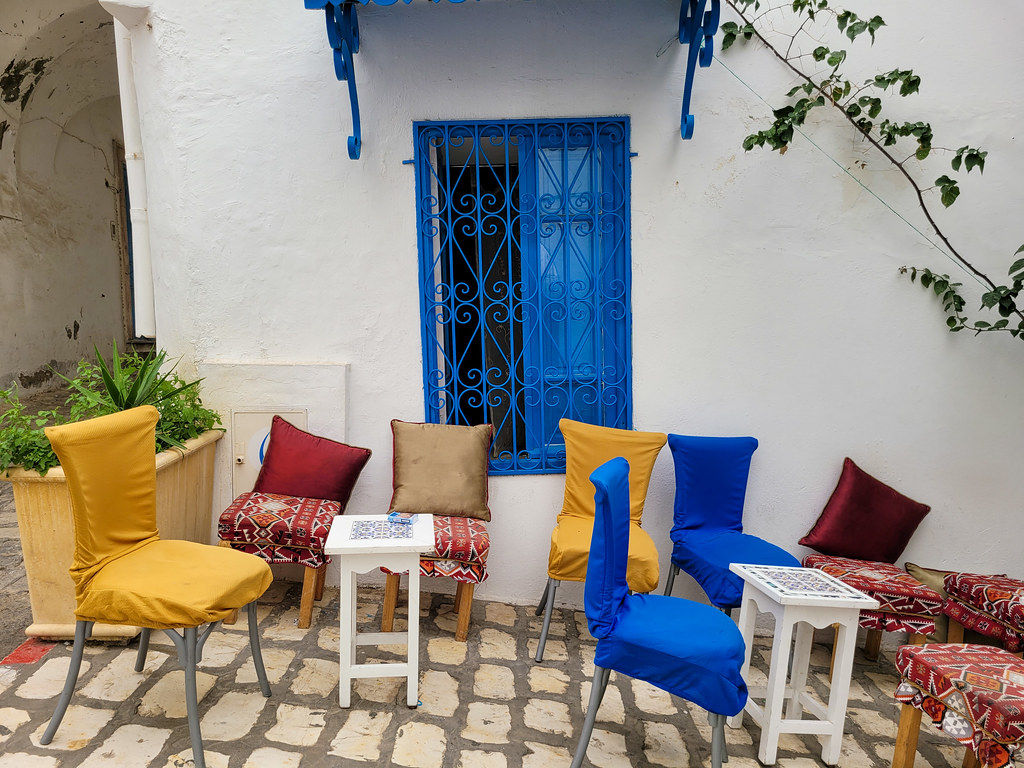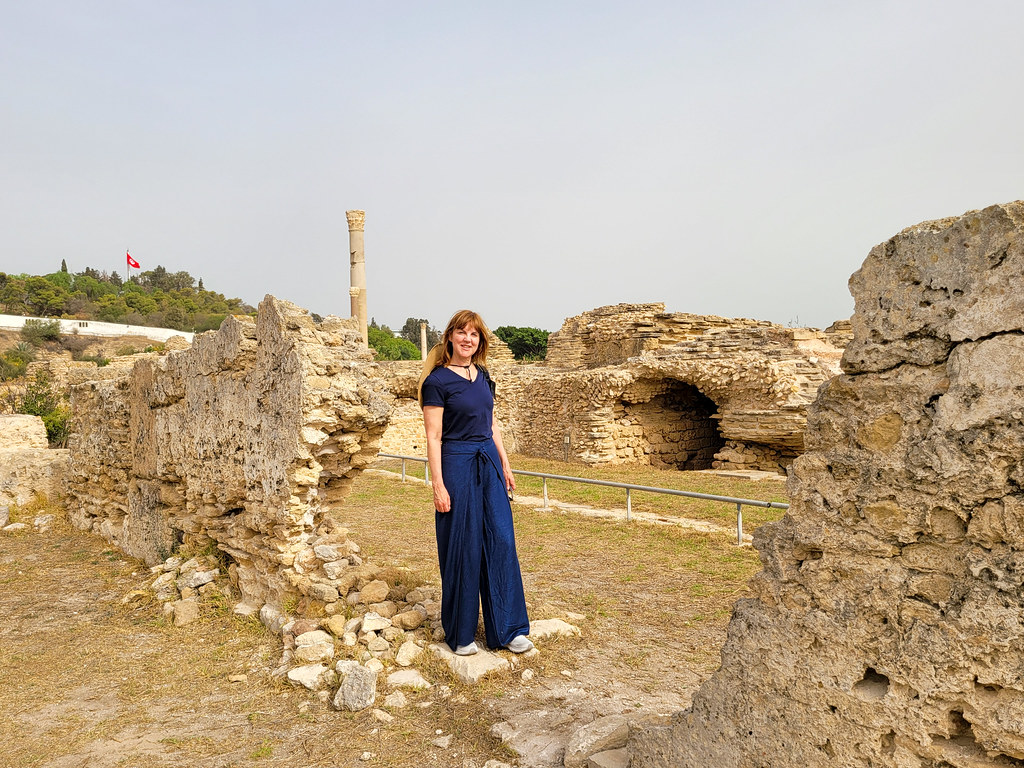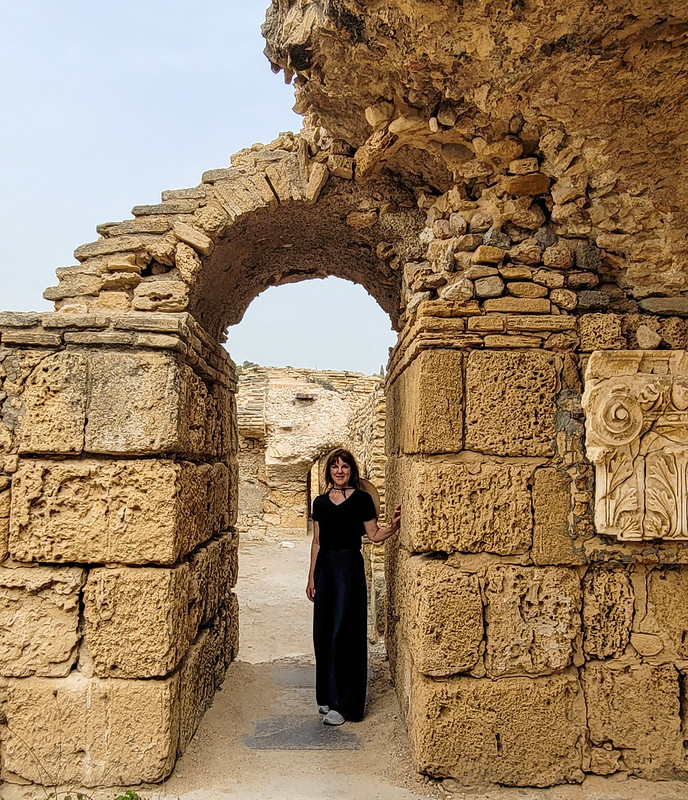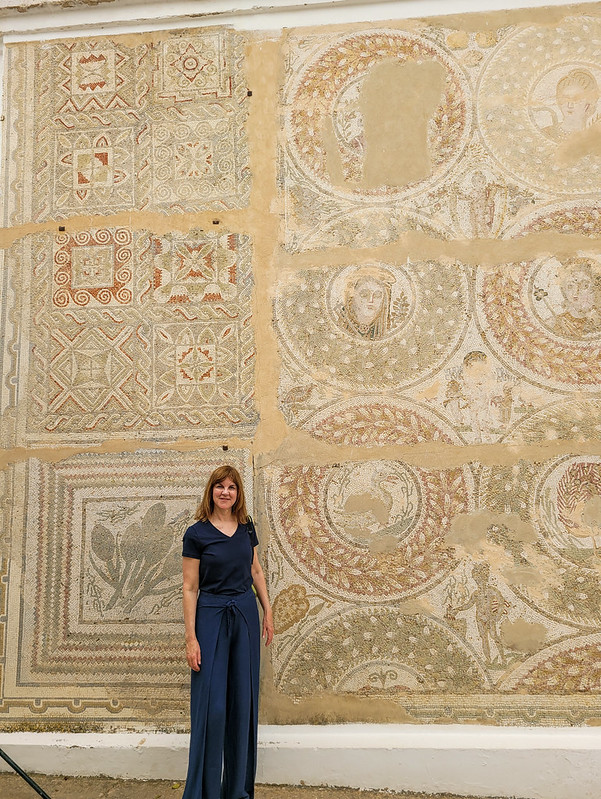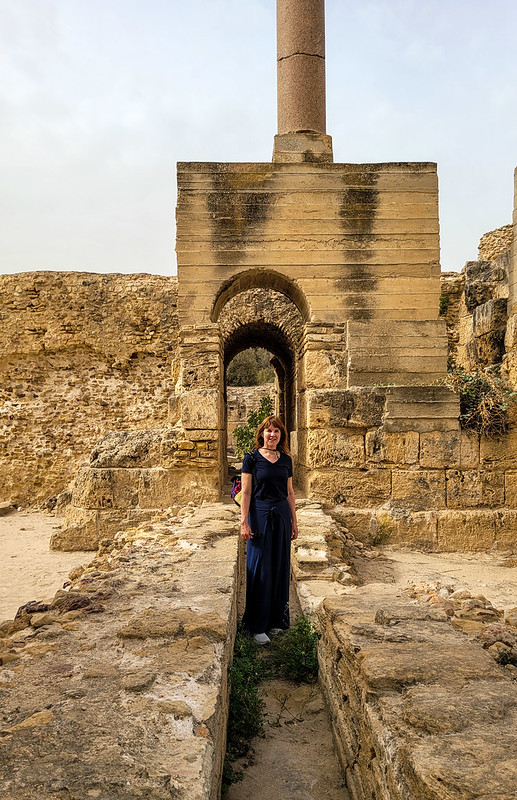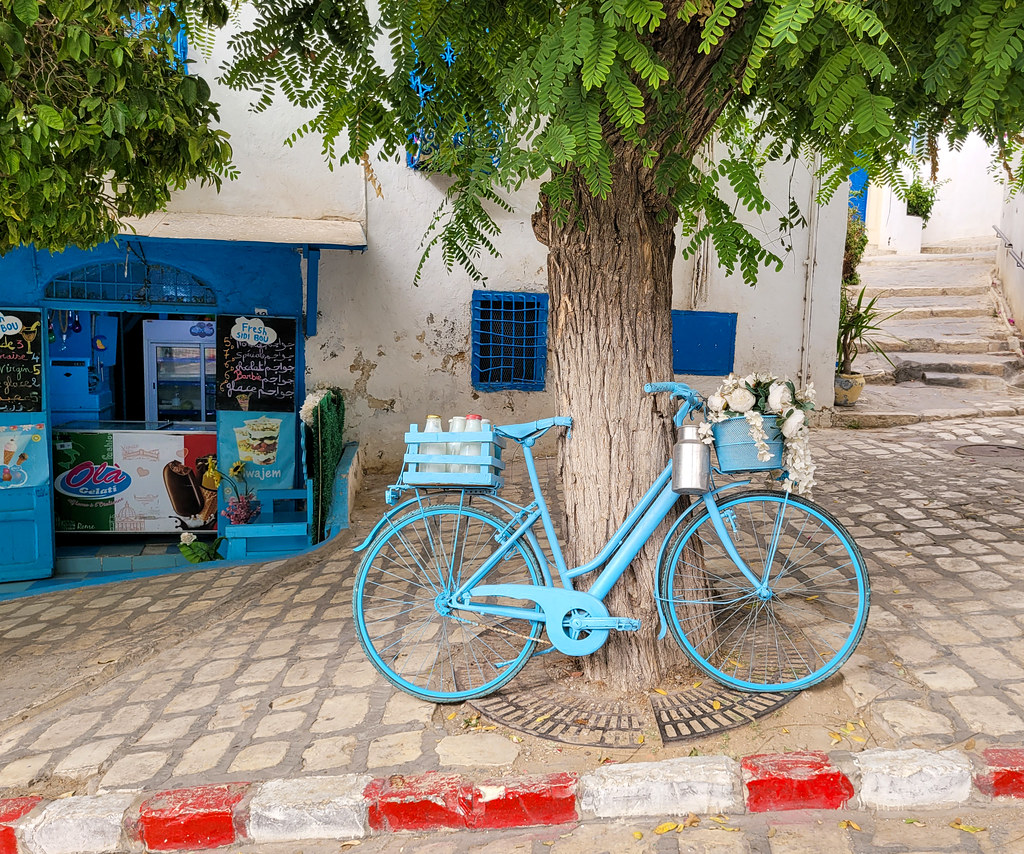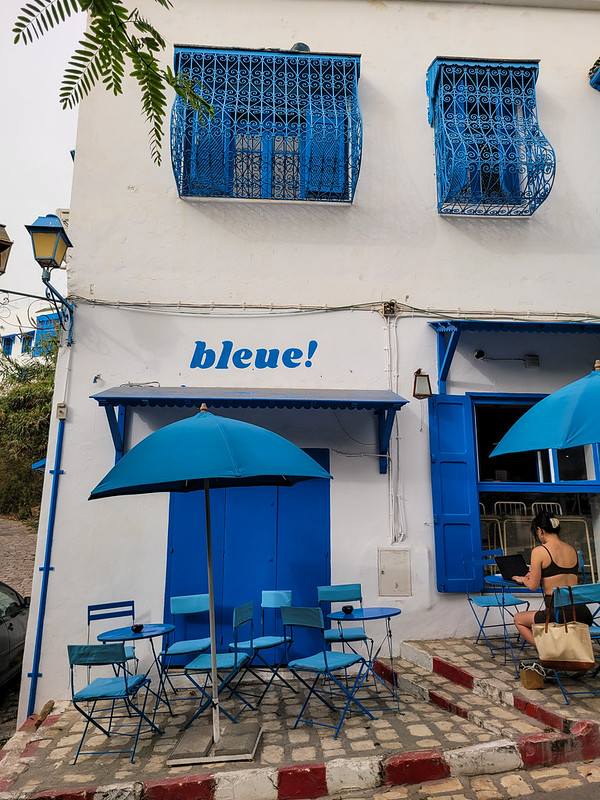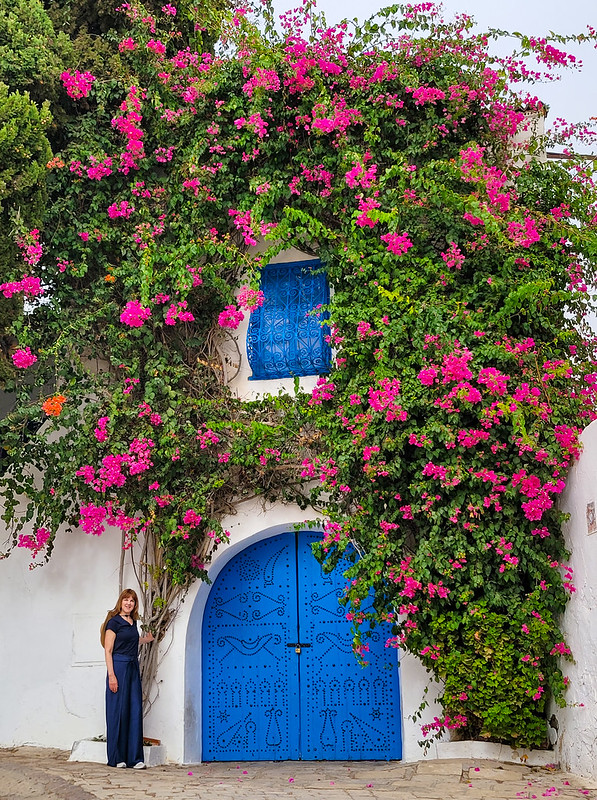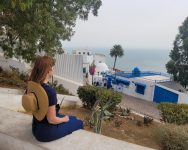
Tunisia Travel Guide – Carthage, Sidi Bou Said & Tunis Medina
The country Tunisia is a treasure trove of archeology, art, Mediterranean vistas and eloquent architecture. Its capital city, Tunis, is the perfect hub from which to experience fascinating travel gems. The top sites in the area include Carthage Archeological Park, Sidi Bou Said, Tunis Medina (Old Town) and Bardo Museum. I was so inspired by my time spent here and love sharing travel tips. So, read on to discover from this Tunisia Travel Guide how to see and do in this unique destination.
About Tunisia
Tunisia is the northernmost country in Africa on the Mediterranean Sea. It’s named after the capital city, Tunis. Here, diverse landscapes include the eastern end of the Atlas Mountains and the northern parts of the Sahara Desert. Tunisia is known for its archaeological site, Carthage, dating back to the 9th century BC and the Great Mosque of Kairouan. The regional power shifted from Carthage to Kairouan and the Medina of Tunis during the medieval period until the early 20th century. Also, the Medina of Tunis is a popular World Heritage Site for tourism. Today, most of its population is Arab and Muslim and the currency is the Tunisian dinar.
Tunisia is known for its cross-cultural influences, such as, Phoenico-Punic, Roman, Paleochristian and Arab. The Berbers inhabited Tunisia and later, the Phoenicians arriving in the 12th century BC and establishing Carthage. By the 7th century BC, Carthage became the most powerful mercantile empire and rival to the Roman Republic. In 146 BC the Romans defeated and occupied Tunisia for almost 800 years. Later, in the 7th century AD, Arab Muslims conquered Tunisia until the Ottoman Empire took control in 1546 for 300 years until the French conquered Tunisia. Finally, Tunisia gained independence in 1956.
My experience started from the port-of-call La Goulette with all the sites within a 20- minute drive away. In one day I was able to do a morning tour at Carthage and spend the afternoon walking the streets of Sidi Bou Said. Unfortunately, travel advisories prevented me from going to Tunis Medina and Bardo Museum. However, I included information on this because if you are here, it is a must-see but considered with safety precautions.
Carthage Archeological Site
Tunis Travel Guide
Carthage was founded in the 9th century B.C. on the Gulf of Tunis by the Phoenicians. It developed into a great trading empire for much of the Mediterranean. During the Punic Wars, Carthage occupied territories belonging to Rome. However, Rome eventually destroyed and overtook Carthage in 146 BC. This created Roman Carthage ruins on top of the original ruins. Because the area containing the ruins is spread out, I suggest taking a guided tour for insights and a ride to the different entrances.
Overall, the most significant sections of Carthage include the acropolis of Byrsa, the Punic ports and Tophet, Roman theatre, necropolises, circus, amphitheater, Roman villas, basilicas, Antoninus baths, Malaga cisterns and archeological reserve. Other remains of Roman and Punic Carthage can be seen in the Carthage Museum.
You will need a whole day to thoroughly enjoy the entire archeological park. If your time is limited to less than half a day, I highly suggest seeing the acropolis of Byrsa, the Roman Baths of Antoninus, Amphitheatre and Roman Villas.
Acropolis of Byrsa: Byrsa Hill was the original location for ancient Carthage with many archeological gems plus a good view of the harbor. Also, Byrsa was the original name of the citadel on the hill. The legend of Byrsa is that when Queen Dido exiled from her home land, so she and her followers settled on Byrsa Hill. Also, on top the hill is the Acropolium or St. Louis Cathedral in Gothic and Byzantine style. Today, it’s used for events and concerts.
Roman Baths of Antoninus: These are the largest Roman baths built outside of Italy during the reign of Antoninus Pius. Separated for men and women, they comprise of cold, warm and hot rooms in separate spaces. Only the ground floor remains, as the second floor collapsed. However, this is breathtaking to explore with mazes of archeological vestiges revealing a grandiose past.
Roman Amphitheater: This was built in the 1st century AD and then rebuilt by Julius Caesar. It’s one of the largest amphitheaters of its time, holding up to 30,000 spectators. Also, it’s built on flat ground rather than a hill.
Roman Villas: These are remains from the former upper-class homes under the Roman empire rule in Carthage. Villa of the Aviary is the only villa on site. It showcases well-preserved mosaics, columns and statues.
Sidi Bou Said Village – Tunisia’s Santorini
Next to Carthage about 15 km north of Tunis is Sidi Bou Said. If you only do one thing in Tunisia, this is the place to visit. Even if you have a couple hours here a wander through the village is life-changing. And if you have longer, even better to soak up all the inspiration from this blue and white sanctuary. The whole village is like a work of art and anyone that wanders here can’t help but be inspired.
It’s named after a religious figure who lived here, Abu Said as-Baji. During the 1920’s, Rodolphe d- Erlanger started the blue-white theme to the town. Today, his home, Ennejma Ezzahra is a museum housing musical instruments with concerts of Arabic music. Overall, the town is known for artists living or visiting here, such as, Paul Klee, Gustave-Henri Jossot, Louis Moillet, Aleister Crowley and many Tunisian artists.
Unique Things to Do in Sidi Bou Said Village
Sidi Bou Said is an open-air museum because it’s overall so esthetically pleasing. Many people describe this village as “Tunisia’s Santorini,” and it’s a photographer’s dream! A great place for an incredible view is the top of the cliff that overlooks the Amilcar and port of Sidi Bou Said. Look for a Mechmoum vendor (there are lots!) and get yourself one of their small flower bouquets or necklaces made from jasmine. Also, enjoy the yummy Bambalouni, a Tunisian donut available in many shops.
Interesting stops in Sidi Bou Said:
Tunisia Travel Guide
Café de delice – Here you can discover why the French singer, Patrick Bruel sang about about this cafe in his song Au Café des Délices on his 1999 album Juste Avant.
Palace Dar Nejma Ezzahra – This palace was owned by Baron Rodolphe e’Erlanger and after his death sold to the Tunisian government. Today, it’s a museum with numerous historical artifacts. It also is the venue for Le Centre des Musiques Arabes et Mediterraneennes, where concerts perform throughout the year.
Museum Dar el-Annabi – This museum displays the way life used to be many years ago in Tunisia. It was a summer home built in the late 18th century. They even offer you a free cup of mint tea while exploring the site.
Art Galleries – There are art galleries galore in this Bohemian village. The most popular ones include Galerie A. Gorgi, Selma Feriani Gallery and Ghaya Gallery. Overall, they mostly showcase local artists.
Elypsa Spa – For wellness travel, this spa offers massages, facials and even has a swimming pool.
Tunis Medina (Old Town) and Bardo National Museum
Tunisia Travel Guide
Safety Precautions: When I was in Tunisia in 2023, it was highly recommended to not tour the Tunis Medina or Bardo Museum for safety concerns. The heightened security measure resulted from terrorism threats. Also, be aware that on March 18, 2015 two militants attacked the Bardo National Museum, killing tourists and taking hostages. Hopefully, you are there at a safer time than myself or those unfortunate ones in 2015. This gives me a good excuse to return because it was a shame to miss it.
The Medina of Tunis (Old Town) is a UNESCO World Heritage Site with over 700 monuments. In the 9th century the Medina was surrounded by walls, but the walls are gone now. From the 12th to 16th century, Tunis lived a Golden Age. Today, the area is filled with narrow alleyways, souks, mosques, mausoleums, madrasah and fountains. Also, in Tunis is the amazing Bardo National Museum, housing the world’s largest collection of Roman mosaics.
Enjoy Tunisia!
Overall, there is so much to see and do around the capital city, Tunis in such a concentrated area. You can either take a deep dive into history or float in inspiration from the beauty. Tunisia has something for everyone. Please share your comments below if you have any ideas on how best to enjoy Tunisia!
Read Next!
Incredible Casablanca, Morocco Day Tour Itinerary & Top Attractions
Extraordinary Luxor Attractions – Valley of the Kings, Luxor Temple & More

